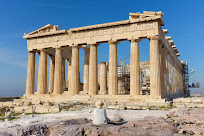Architecture and History
Architecture and History have a unique relation and they go hand-in-hand. This relation is strengthened time to time. History influences the architectural style, the situation and circumstances leading to the construction of that structure. The aesthetics and ornamentation of a particular building depicts its time of construction and in which era or under which king/ruler it was constructed.
Every historical monument has a story to narrate. Architecture is influenced by religion, social, political and cultural factors. The religion factor includes monuments that serve as a place of worship. Every religion has its symbols which are depicted in these buildings and every religious monument is different from the other.
Architecture and history not only include historical monuments
such as forts, palaces, but also well-developed cities and towns. The most
popular and well-developed cities were Harappa and Mohenjo-Daro of the Indus Valley
Civilization. These cities were well-planned and well-developed in that era
when people were moving from copper age to iron age. In fact, we can say that
people began to live a civilized lifestyle from the age of Indus Valley
Civilization.
Architecture and History also contribute in the
serving the residents and locals with the culmination of art, design and
technology. Some structures serve as astronomical wonders, some as acoustical
wonders, while some as cooling strategies. Also, some structures serve as a
leisure homes for the kings/rulers. Some structures were constructed to safeguard
the citizens whereas few were constructed to commemorate the victory over a
kingdom or a king.
Architecture and History work in correlation as well as according to the ages – ancient, medieval and modern, historical and architectural movements and the need of the people. So, it is true to believe that every monument has a story to narrate.
Image Source: Google









Very good... Quite elaborate to understand the link between architecture n religion
ReplyDeleteThank you.
Delete